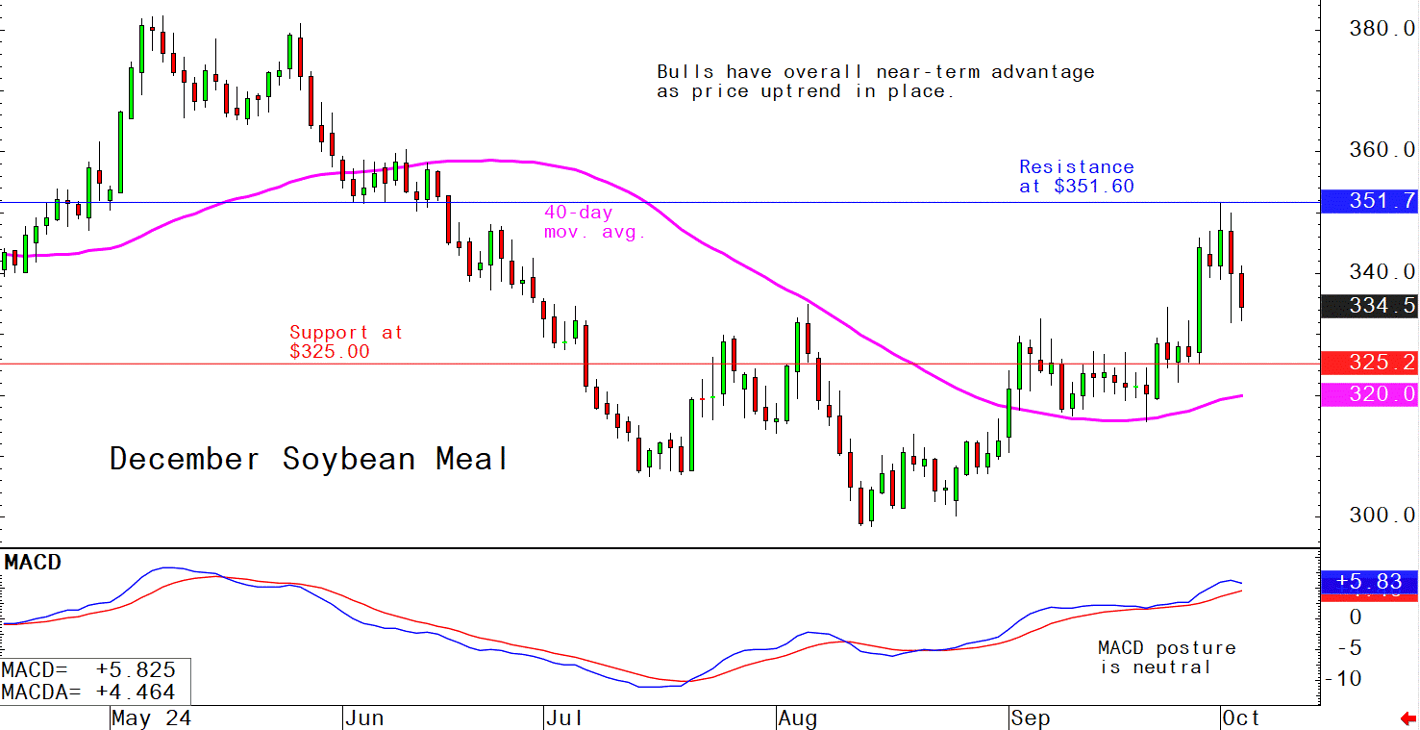



Weekly global protein digest: Lean hog futures bulls in firm command
Livestock analyst Jim Wyckoff reports on global protein news
December lean hog futures hit a four-month high this week and bulls have the solid near-term technical advantage. That suggests more upside price action in the near term. The latest CME lean hog index is up 32 cents to $84.45 as of Oct. 1. Wholesale price strength is underpinning the pork market. Wholesale strength will likely persist over the coming 2-3 weeks as October serves as National Pork Month, which will likely find grocers featuring more pork deals at the meat counter.
Latest USDA and other news regarding the global pork industry
Weekly USDA US pork export sales
Net sales of 43,400 MT of pork for 2024 were up 55 percent from the previous week and 61 percent from the prior 4-week average. Increases primarily for Mexico (24,000 MT, including decreases of 200 MT), China (7,900 MT, including decreases of 100 MT), Canada (2,900 MT, including decreases of 600 MT), South Korea (2,000 MT, including decreases of 500 MT), and Japan (1,500 MT, including decreases of 1,200 MT), were offset by reductions for Australia (300 MT). Exports of 25,900 MT were down 7 percent from the previous week and 8 percent from the prior 4-week average. The destinations were primarily to Mexico (10,900 MT), Japan (3,800 MT), China (2,600 MT), South Korea (1,800 MT), and Canada (1,600 MT).
Iowa AG leads 22-state coalition to challenge Massachusetts pork law in appeal
lowa Attorney General Brenna Bird led a coalition of 22 states in filing an amicus brief to support an appeal against a district court ruling that upheld Massachusetts’ Question 3 (Q3) law. Question 3 is a Massachusetts law approved by voters in 2016 that sets minimum size requirements for farm animal containment. Similar to California’s Proposition 12, Q3 prohibits the sale of pork from hogs born to sows housed in pens that don’t comply with Massachusetts’ standards. However, Q3 goes a step further by also banning the transportation of non-compliant pork through Massachusetts. The coalition of states argues several points against Q3: 1) They contend Massachusetts is overstepping its authority by effectively regulating farming practices in other states; 2) The attorneys general claim Q3 poses “crippling costs” for farmers and could lead to “skyrocketing prices” for consumers; 3) The ban on transporting non-compliant pork through Massachusetts is seen as a potential disruption to interstate commerce; 4) Bird argues that “Massachusetts does not get to tell Iowans how to raise their pork.”
China’s sow herd contracts
China’s sow herd stood at 40.36 million head at the end of August, down 4.8% from a year earlier, according to the ag ministry. The sow herd was modestly smaller than the 40.41 million head at the end of July.
Several factors appear to be driving this contraction in China's sow herd:
• Low prices: Swine and pork prices have been low, causing losses for producers and leading to herd liquidation.
• Disease issues: Lingering animal diseases, including African swine fever (ASF), have continued to affect the sector, particularly in North China.
• Market oversupply: The aggressive expansion of China's swine herd in 2020-2021 led to production exceeding market demand.
• Producer exits: More small- and medium-sized producers have exited the market due to financial challenges and difficulty obtaining loans.
The contraction in the sow herd is part of larger shifts in China's pork industry:
• Shift to large-scale production: The share of large-scale swine producers versus small- to mid-sized producers is growing significantly.
• Improved efficiency: With fewer inefficient sows, the number of piglets weaned per sow per year has improved.
• Production forecast: Despite the sow herd decline, China is still expected to produce 695 million head of swine in 2024, though this represents a 3% year-on-year decline.
USDA pig report bearish
USDA’s latest Hogs & Pigs Report estimated the Sept. 1 U.S. hog herd at 76.480 million head, up 347,000 head (0.5%). The breeding herd declined 135,000 head (2.2%) to 6.044 million head. The market hog inventory increased 483,000 head (0.7%). The summer pig crop declined 265,000 head (0.8%) from last year to 35.030 million head, as a 1.7% drop in sow farrowings more than offset a 0.9% increase in the number of pigs per litter. The report data was mostly neutral compared to pre-report expectations, aside from expected near-term market hog inventories.
Price-supportive frozen US meat stocks data
USDA’s latest Cold Storage Report showed beef stocks declined contra-seasonally during August, while pork stocks rose less than average. Both imply meat demand more than kept pace with supplies last month. Beef stocks totaled 395.2 million lbs. at the end of August, down 7.4 million lbs. from July, whereas the five-year average was a 5.1-million-lb. increase for the month. Pork stocks totaled 453.6 million lbs., up 175,000 lbs.
The next week’s likely high-low price trading ranges:
December lean hog futures--$72.40 to 78.00 and with a sideways-higher bias
December soybean meal futures--$325.00 to $360.00, and with a sideways-higher bias
December corn futures--$4.20 to $4.40 and a sideways-higher bias
Latest analytical daily charts lean hog, soybean meal and corn futures











